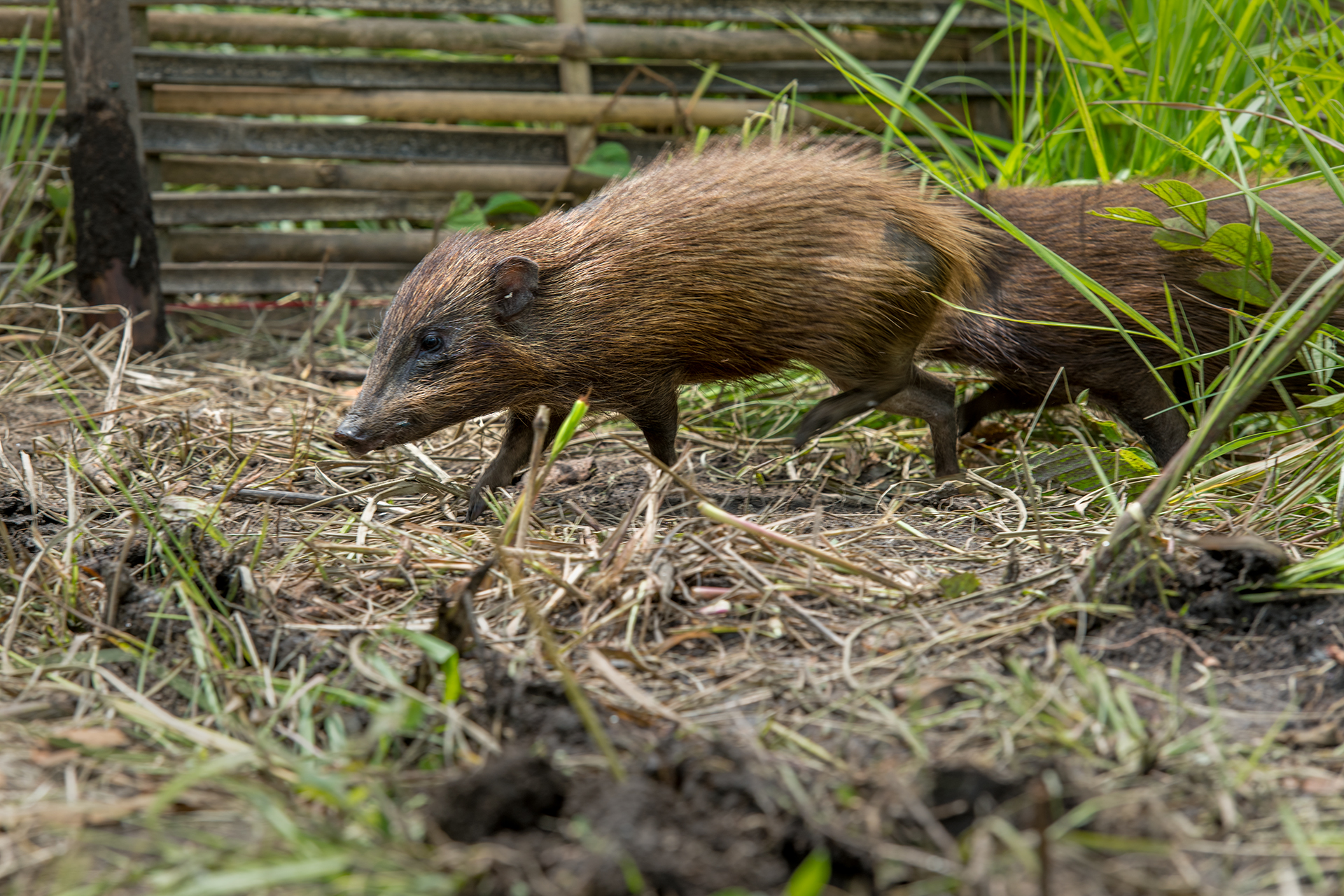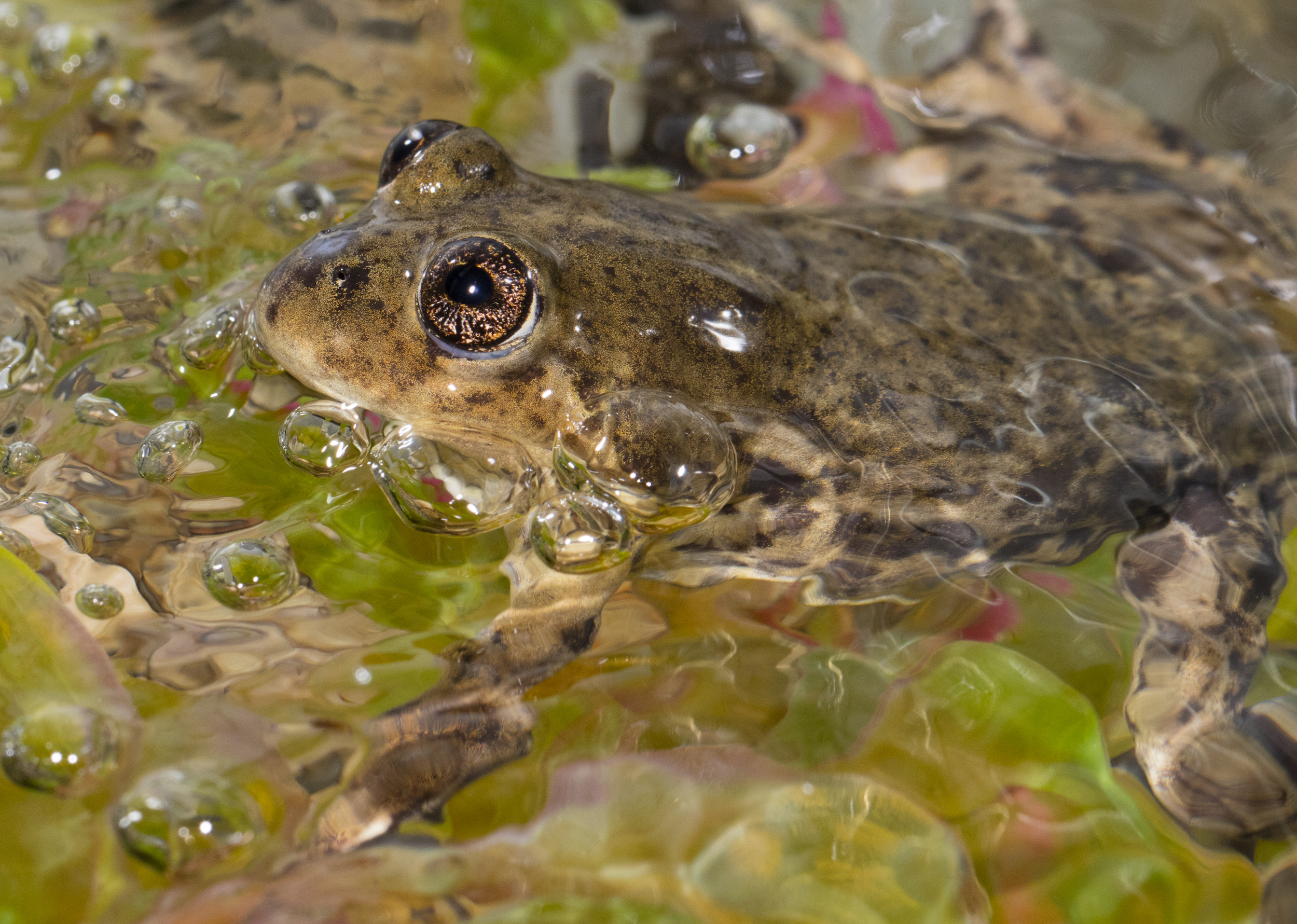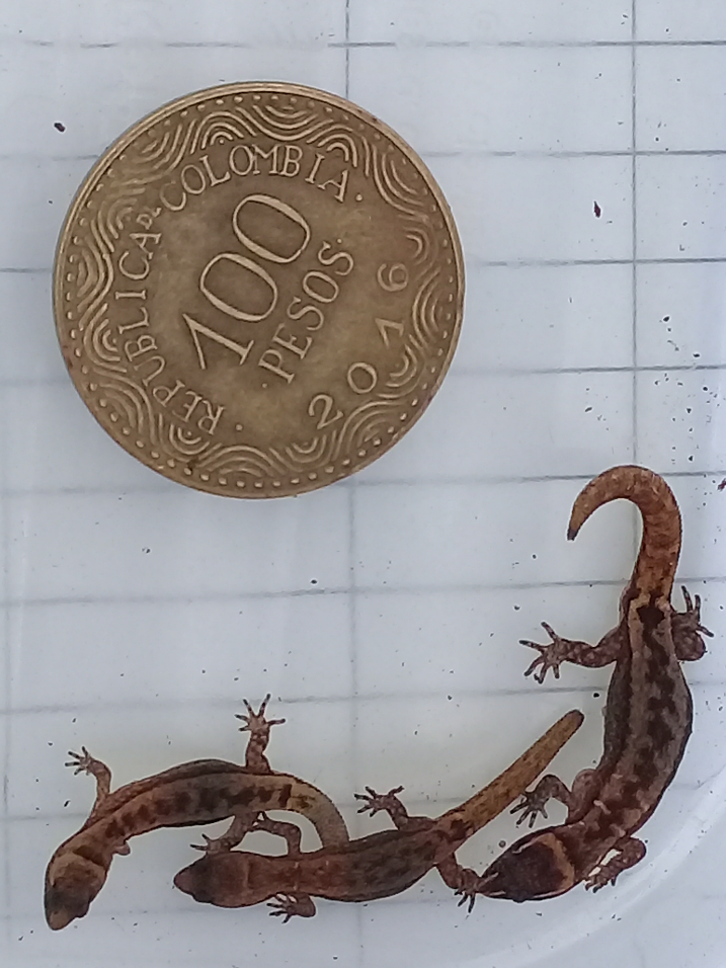- The bulk of wildlife conservation funding goes to charismatic species, but there are ways to push charisma-challenged species as well.
- Researchers say that telling a species’ story including photos can help inspire people to save the small and forgotten species.
- Zoos have also proven critical in protecting less charismatic species, but will this change in our COVID-19 world?
This is part 2 of a series written by Mongabay columnist Jeremy Hance. Part 1 is here.
Let’s be honest: you’ve probably never heard of the Colombian dwarf gecko (Lepidoblepharis miyatai). That’s OK, I hadn’t either until I researched this story. But you should hear of it now: it’s so small it could fit on two sugar cubes with only its tail dangling over. It’s only found in a small section of dry forest in Colombia. And also, according to Liliana Saboya Acosta, a fellow for the Zoological Society of London’s (ZSL) EDGE program, it has a “very cute face.”
Acosta says the minuscule gecko “looks grumpy … because it has small scales on the top of its eyes and gives this impression that is always mad.”
Tiny, cute, grumpy: this makes for an appealing image. There’s even more to the story, though. After it was first described in 1985 the grumpy gecko vanished. Many thought it extinct. That is, until conservationists rediscovered it in 2013 in a location 100 kilometers (60 miles) from where it was initially described. The species belongs to a genus of dwarf geckos, Lepidoblepharis, that are believed to have separated from all living reptiles 70 million years ago. This is what makes the species such a good candidate for the Zoological Society of London’s EDGE program, which stands for Evolutionary Distinct and Globally Endangered and focuses on the unusual and imperiled.

Today, the species is categorized as critically endangered by the IUCN Red List, and it is number 44 on the EDGE Reptiles list.
Despite this, Saboya Acosta says raising funds for studying and conserving this tiny grumpy gecko is “really hard.”
“That’s why we are always asking ourselves, how do we attract people to learn about reptiles? What strategies do we use to draw attention to a small lizard? What information is relevant to study in order to keep it? In general terms, the reptiles of [Colombia] are little known and those that are known are almost always viewed with fear and contempt …We have had to start fighting the idea of what is this little animal for.”
Few in the public would ask what is the point of a lion, tiger, elephant, or blue whale. But when it comes to less charismatic, small, little-known species, this is often a basic question. What’s the point of this species? As if a species has to have some practical use to human beings in order to be considered worth protecting.
“If you cannot tell an engaging story about these incredible animals and the threats they face it is almost impossible to engage anyone,” says Olivia Couchman, the ZSL manager for the EDGE of Existence program.
Protecting the little loved
Saboya Acosta, who’s been working on the Colombian dwarf gecko via the EDGE program for two years now, is not alone. Any conservationist who works with little-known, charisma-challenged species will tell you similar tales: the difficulty of getting people to care, the challenge of raising funds, the frustration of working on a species one year only to have to abandon it the next due to lack of resources.
“We have to figure out better ways to make other species more visible and make those emotional connections with people. How do we make people love a harlequin toad, red colobus monkey, or tamaraw?” says Barney Long, the senior director of conservation at Global Wildlife Conservation (GWC). Like EDGE, GWC also puts special focus on lesser-known species that are on the edge of extinction.

Lesley Dickie, chief executive of the Durrell Wildlife Conservation Trust, says the first step in gaining support for charisma-challenged species is simply teaching the public and donors the very basics about them.
“When raising money for example the Mountain Chicken, you have to have a more complicated conversation to even start,” Dickie says. “What is it? Is it a chicken? No, it is a frog. Hmm, never heard of that, so if I have never heard of that, how could it be important?”
Durrell has been focusing on the conservation of lesser-known species for more than 50 years.
Getting the public to really listen when it comes to a little-known species requires at least two things, according to Couchman: a common name (as opposed to just a scientific name) and some quality images. In her experience, these two tools “play a major role in securing funding for lesser known species.”
Couchman points to the Cebu flowerpecker (Dicaeum quadricolor) as an example. Because this critically endangered bird was only rediscovered in 1992 and there are no good photos of it, Couchman says it’s incredibly difficult to “engage people.” She says that EDGE had similar issues with the greater Cuban funnel-eared bat (Natalus primus), which also lacked good pictures, until the group got “extraordinary close-ups of its wrinkly face.”

Some scientists in recent years have caught on as well to the importance of naming a species: giving names to small, charisma-challenged species based on celebrities or popular fictional characters or a species’ distinct or weird attributes.
Another potential tool is the media.
“When species get [media] attention it can really help,” says biologist Rebecca Stirnemann, who works in Samoa on several bird species close to extinction. “Indeed, media is critical.”
Stirnemann says it’s important to train scientists and conservationists in the importance of media attention and how to work with journalists.
“We need to do a better job of explaining the needs and urgency of the conservation of lesser-known species,” says GWC’s Long. “If people are interested in and passionate about preventing extinctions, they should be focusing on the species in most imminent threat of extinction such as the starry night harlequin toad, Tana River red colobus or the Yangtze giant softshell turtle.”
Picking species
Given the challenge of finding funders for such charisma-challenged species, both Couchman and Dickie note their respective organizations have to put a lot of research into selecting target species to begin with.
Couchman says species are evaluated based on the potential for securing funds, the ability to successfully complete a project, and any security issues within the species’ habitat.
“Even just a small investment in these ‘higher risk’ species can result in the discovery of vital new information,” Couchman says. “Supporting something as low cost as ecological surveys we can rediscover species or discover a species range is much larger than previously recorded.”

Once a species is picked, EDGE funds a local conservationist as a fellow to conduct the research and conservation.
“We have found that the only way to secure a future for these species is by investing in local people from these regions, to design, build and lead these programs,” Couchman says. She says the lack of protection for charisma-challenged species can also be linked to “a significant lack of conservation capacity,” noting that most of the neglected EDGE species are in low- or middle-income nations.
For Durrell, picking a new species means looking for an animal that has fallen through the cracks, that potentially plays an important role in its ecosystem, and that simply “feel[s] like a Durrell project,” according to Dickie.
“Would it make any sense for Durrell to start a tiger project?” Dickie asks hypothetically. “We would be a drop in the ocean, even with the relative ease of fundraising for the most popular species in the world.”
Dickie also says that open communication with funders is a must to build long-lasting relationships and, in turn, sustainable projects. But this requires a conversation.
“We are too shy at times, not loud enough … about why non-charismatic species also matter,” she adds.
Long agrees, noting that “private donors — when they can be found — are essential for supporting species conservation projects.”

He says if a donor gets emotionally connected to the species and its story they can become “long-term champions.” This is incredibly important given how funding for many charisma-challenged species is often sporadic at best.
No species is impossible to sell, according to Long, because “every species has traits that can appeal to someone.” Conservationists just need to figure out what those are and then use them to draw interest. What story is best to tell about the species?
The idea of a “story” comes up often. Humans, of course, are a story-loving species, and one of the best ways to connect people, especially to small, non-colorful species — some traditionally considered ugly or repulsive — is to turn their conservation plight into a story.
“I think a better awareness of the complex and extraordinary diversity of life on the planet would increase the conservation attention of lesser known species,” Couchman says. “We receive emails from children on a daily basis enthralled by the weird and wonderful EDGE species but this appears to diminish as we grow older and can become cynical about what can be achieved in conservation.”
Zoos prove critical for the uncharismatic
Some may be surprised to hear it, but one of the key revenue sources for charisma-challenged species, according to multiple conservationists, are zoos.
Long says the zoo community is the “most important supporter base” for lesser-known species.
“Zoos are great partners around the conservation of critically endangered species as they bring expertise often not found in conservation non-profits and are willing to work on little-known species,” he adds.
Zoos may be more willing to work on lesser-known species for a number of reasons. For one, administrators working in zoos tend to be animal nerds, knowing far more about the wide diversity of our world than the public. Moreover, many zoos house lesser-known and charisma-challenged species, providing a direct connection to an on-the-edge species.

Arnaud Desbiez, who runs the Giant Armadillo Conservation Project, says zoos not only provide funding, but can often bring to the table specialized knowledge, team-building capacity, and connections to other facilities and donors.
“[They] help the project to grow every step of the way,” he says. “I think this is simply because people who work in zoos love animals, they are passionate about animals and of course want to help the underdog!”
Prior to Desbiez’s work, almost nothing was known about giant armadillos (Priodontes maximus); today the group is uncovering its habitat needs, reproductive behavior, and the important roles it plays in the ecosystem. The majority of Desbiez’s project has been supported by funding from zoos, even though there are no giant armadillos in captivity anywhere.
Durrell, in this sense, is unusual in that it has a physical zoo as its base: Jersey Zoo in the Channel Islands. Much of Durrell’s conservation work stems from its zoo work, and it has decades of experience in captive breeding and re-releasing species successfully.
In a bid to grow conservation support from zoos, the World Association of Zoos and Aquariums (WAZA) has called on all zoos to spend at least 3% of their revenue on conservation efforts.
Of course, COVID-19 has now hit zoos and aquariums harder than any crisis before, putting their financial streams for conservation in question — and likely imperiling even more species.

“We had been seeing some very promising signs that charitable giving to environmentally focused charities such as a Durrell, was rising over the past few years as the public became more and more concerned about the damage being wrought on the planet,” Dickie says. But now she’s concerned that the rise of COVID-19, even though directly linked to the wildlife trade and human destruction of forests and habitat, will push donors and the public away from supporting environmental issues.
If that ends up being the case, the species that will suffer the most will be those without a public profile.
Back to our gecko
The EDGE program has chosen the Colombian dwarf gecko for its Scale-up award this year, despite the species being so obscure. Provided by Fondation Segré, the EDGE Scale-up award funds a 30,000 pound ($40,000) grant for one to two years of extra attention.

“We use this award to support the most promising conservation leaders from these regions who are working on species that are not traditionally charismatic and would benefit from an additional platform and support to ensure the establishment of a long-term program,” Couchman says. She adds it can be difficult to secure grants of more than 5,000-10,000 pounds ($6,600-$13,100) for “those traditionally less charismatic species at this stage of the project, when research still plays an important role to design the conservation intervention.”
Liliana Saboya Acosta will be looking at the gecko’s genetic diversity, exploring potential land use in the area, and working on educating local communities about the minuscule, grumpy gecko that lives on their doorstep.
“Each species on this planet tells us a story,” she says, “and we are their voices.”
